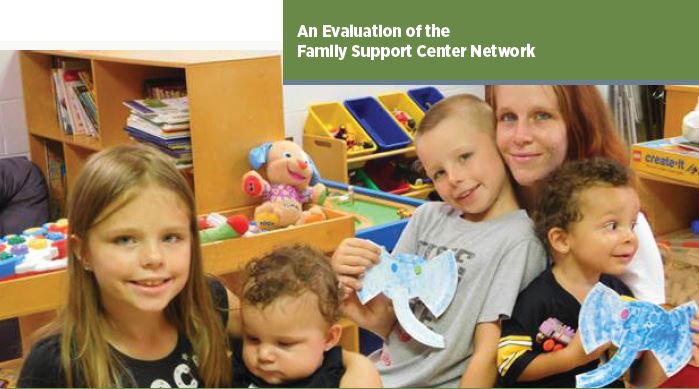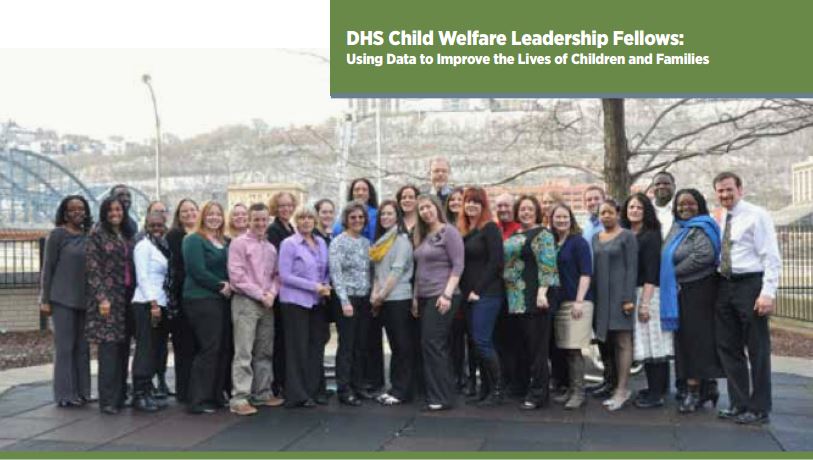Eleven Allegheny County foster care provider agencies formed a training cooperative in order to improve the number and quality of training opportunities for foster parents. After increasing the number and variety of trainings, the cooperative requested feedback to inform quality and access improvements. DHS staff conducted telephone surveys with foster parents and identified a number of recommendations for improvement. This brief provides an overview of the survey process and findings.
Conferencing and Teaming is the Allegheny County Department of Human Services’ practice model designed to engage child welfare participants, and their natural supports, in a process of family strengthening through client-driven goal setting and achievement. An analysis of participant experiences with Conferencing and Teaming was conducted in order to assess their satisfaction with the process and ways in which participation might be improved. The analysis was based on telephone surveys with more than 200 participants. Findings from the analysis and resulting recommendations are described in this brief.
Allegheny County, like much of Western Pennsylvania, is in the midst of an opioid overdose epidemic and it is vitally important that County residents have access to the best and most effective treatment to support their recovery from opioid use disorders. Medication-assisted treatment, or MAT, combines medication and counseling/behavioral therapy and, when clinically appropriate, is a standard of care in the treatment of opioid use disorders. Research has proven MAT to be highly effective in improving recovery outcomes and reducing criminal behavior and risk of infectious disease.
The Allegheny County Departments of Health and Human Services, together with Allegheny HealthChoices, Inc. and Community Care Behavioral Health, issued a Joint Position Statement on Medication-Assisted Treatment for Opioid Use Disorders in Allegheny County, describing their expectations for contracted treatment providers and others who encounter or serve individuals with opioid use disorders. It states that every person entering substance use treatment for opioid use is entitled to the opportunity to learn about and consider MAT as a treatment option. It is intended to dispel ambiguity and should be understood as a clear statement in support of an effective treatment continuum that includes MAT.
Implemented at the end of 2013 and designed to provide service coordination and supports for families accessing Allegheny County’s four emergency homeless shelters, the Homeless Services and Supports Coordination program (HSSC) served about 300 families with children in its first year. This evaluation was designed to elicit information about participants’ experiences with HSSC services as well as their overall shelter experience. Among other findings, it found that staff personality and style of interaction were essential elements of what made the program successful. The report discusses the implications of this and other findings as well as opportunities for consideration going forward.

Receiving more than 3,000 calls annually, the Allegheny County Department of Human Services (DHS) Director’s Action Line (DAL) is an effective mechanism through which clients and other community members can resolve issues and get information about DHS services. It is also an important feedback tool for DHS, providing information about client experiences and perceptions of the services they receive. An evaluation was conducted of both of these functions, and the findings led to valuable insights and recommendations for improving outreach and follow-up.

An evaluation of 25 Allegheny County Family Support Centers looked at the operation and impact of individual Centers as well as the network as a whole, in five specific areas: family empowerment; connection to social services, early child development and school readiness; maternal and child health; and child abuse and neglect. This report describes the network, summarizes the network-wide findings, and offers a number of recommendations for strengthening the network and improving its outcomes.
This series of reports presents data about homicides, shots fired, shootings and aggravated assaults with a firearm in the City of Pittsburgh. Demographic information about homicide victims and offenders, the location of homicides and calls for shots fired, and detail about when violence occurred are also provided. Explore the links below to view violence data for a range of time periods.
Related interactive visualizations:
Violence Trends in Allegheny County

The Jail Collaborative identified four primary recidivism reduction strategies as its focus for this three-year period: 1) ensure high quality, evidence-based programs for people at a higher risk of re-offending; 2) make transition to the community effective for each person leaving the jail; 3) reduce barriers for formerly incarcerated people and 4) develop a comprehensive plan for diversion, treatment and support for people with behavioral health issues. These strategies were selected on the basis of severity of need, research that demonstrates their efficacy, and cost/benefit to taxpayers.
Information about the Jail Collaborative and its activities, as well as further details about these four strategies, are included in the Strategic Plan.
A new and improved security risk classification system was recently implemented in the Allegheny County Jail. Each inmate is assessed through the use of a validated tool and assigned a score – ranging from minimum to maximum risk – that is used to make housing and programming decisions. The new system is a result of an extensive process that involved external consultants, internal planning, revised procedures and staff training. The results: reductions in paperwork and the backlog of inmates awaiting classification; a bias-free process that has resulted in decreases in the population classified as maximum risk and increases in the populations of medium and minimum risk; and increased programming and housing opportunities for inmates who were previously, and unnecessarily, classified as maximum risk.
Click here to read the full data brief.
Writer: Molly Morrill
Analysis: Chloe Bohm
Creating an integrated Department of Human Services in 1997 was a herculean task. It involved combining four formerly-separate departments, geographically dispersed and structured in very different ways. Administratively, technologically, fiscally and culturally, each had functioned autonomously for decades. A strategic set of engagement and communication efforts were key to the community buy-in and support that led to the successful integration of the department.
This data brief summarizes the results of the YOUth Count survey, Allegheny County’s first point-in-time count focused specifically on the number and needs of homeless and/or unstably-housed youth ages 18 through 24 years.
Click here to read the full report.
Data analysis/writers: Hilary Scherer and Abigail Horn
More than 200 families were interviewed about their experience with Conferencing and Teaming meetings. Although most responded positively to the meeting process, only about two-thirds reported that the meeting resulted in meaningful outcomes for their family. Increasing family involvement in identifying realistic outcomes may improve the experience and relevance of Conferencing and Teaming meetings.
Click here to view the full report.
Click here to view the accompanying infographic.
Survey design, administration and analysis: Lynn Bottoms, Michael Mitchell, Phyllis Nettles, Katherine Stoehr and Sarah Thurston

Twenty-seven child welfare professionals participated in the first year of the Leadership Fellows program, learning how to use data to 1) identify issues that negatively impact children and families in the child welfare system and 2) make recommendations to address those issues. The fellows focused on teenage girls in out-of-home placement and recommended strategies to reduce home removal and – in situations where placement was necessary – to improve the placement experience. In addition to addressing system issues, the program served as a professional development experience for the fellows and resulted in improved career opportunities for many.
Click here to view the full report.
Content and analysis: Brian Bell and the 2014 Child Welfare Leadership Fellows
Writer: Susan Gove
When removing a child from home is necessary, a stable foster home is the preferred placement option; unfortunately, adolescents and teenagers are much less likely to find such a home and often end up in group homes or other congregate settings. The Families for Teens initiative, funded by the Administration for Children and Families of the U.S. Department of Health and Human Services, is designed to increase the number and quality of foster homes for these older youth through a variety of collaborative, training, support and marketing strategies.
Click here to view the full report.
Content and analysis: Sanjeev Baidyaroy, Emily Kulick and Katherine Stoehr
An involuntary commitment is an application for emergency evaluation and treatment for a person who is considered to be a danger to self or others due to symptoms of a mental illness. In Allegheny County, petitions for involuntary commitment are managed and authorized by the Department of Human Services (DHS), through its Mental Health Information, Referral and Emergency Services (IRES) 24-hour phone line.
This report presents an analysis of all involuntary commitment petitions received by DHS from 2002 through 2013, during which time petitions were filed on 37,750 individuals, most commonly involving teens and young adults. African Americans experienced higher rates at almost every age and men experienced higher rates than women of the same race.
